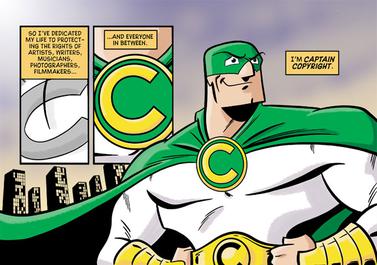For those following the proceedings in Province of Alberta et al v. Access Copyright, Federal Court T-326-18 (the K-12 proceeding), which I wrote about on October 5, 2023, here is what to expect following the conclusion of the opening statements and evidentiary phase of the summary trial motion. This is the Direction of the Federal Court from presiding Justice Aylen dated October 17, 2023:
Ottawa, Ontario
K1A 0H9
October 17, 2023
BY EMAIL ONLY
Counsel for the Plaintiffs:
Wanda Noel wanda.noel@bell.net, wanda.mary.noel@gmail.com
Ariel Thomas law@arielthomas.ca
J. Aidan O’Neill aoneill@fasken.com
Alexandra Logvin alogvin@fasken.com
Counsel for the Defendant:
Sarit Batner sbatner@mccarthy.ca
Barry B. Sookman bsookman@mccarthy.ca
Daniel G.C. Glover dglover@mccarthy.ca
Laura E. MacDonald lmacdonald@mccarthy.ca
Allison Spiegel aspiegel@mccarthy.ca
RE: THE PROVINCE OF
ALBERTA ET AL v. THE CANADIAN COPYRIGHT
LICENSING AGENCY
Court File No: T-326-18
This will confirm the Directions of the Court
(Madam Justice Aylen) issued on October
17, 2023
“The following timetable
shall apply to the closing arguments on the summary trial motion:
(a) Access Copyright shall
serve and file their further written representations (which shall
not exceed 60 pages in
length, without leave of the Court) by no later than November 10, 2023,
which shall replace their
original written representations.
(b) The Plaintiffs shall
serve and file their further responding written representations
(which shall not exceed 60
pages in length, without leave of the Court) by no later than
December 4, 2023, which
shall replace their original written representations.
(c) Access Copyright shall
serve and file any reply written representations by no later than
December 18, 2023.
(d) The oral closing arguments shall be held, in person,
at the Federal Court in Toronto
on January 17 and 18, 2024 commencing at 9:30 am
(Eastern).
(e) The parties shall
ensure that their further representations address, among other things,
the following issues:
a. Who bears the burden of
proof on each issue;
b. How the limitation
period issue factors into each of the three issues put forward by the
parties, if at all;
c. Substantive submissions
on the asserted limitation bar (including in relation to any
equitable relief), with
reference to the relevant evidence (such as the presence or absence of
FTE forms, FTE reporting,
invoicing, etc.);
d. Can someone “offer to
pay” under the Copyright Act by way of their conduct?
e. Where the Court finds
the terms of the licence that Access Copyright asserts that the
Plaintiffs offered to pay
for;
f. The distinction between
the tariff and a licence, if any;
g. What documents shed
light on the parties’ understanding of the term of the licence
that Access Copyright
asserts that the Plaintiffs offered to pay for (annual, 3 years, 6 years);
h. Did the Copyright Board
amalgamate the two proposed tariffs or simply hear them
together? What impact, if
any, does this have on the term of the licence?
i. How, if at all, the
principles applicable to oral contracts come into play in establishing
the terms and conditions of
the licence that Access Copyright asserts that the Plaintiffs offered
to pay for;
j. How does a continuation
tariff impact the term of the asserted licence, if it all;
k. Is there an ability to
terminate the licence that Access Copyright asserts that the
Plaintiffs offered to pay
for and if so, on what basis and where does that ability come from?
l. Clear submissions as to
the evidence relied upon and theory of liability for Access
Copyright’s assertion that
the Plaintiffs offered to pay for a licence for each of 2016, 2017,
2018, 2019, 2020, 2021,
2022 and 2023;
m. Is Access Copyright
asking the Court to find that the Plaintiffs have engaged in serial
infringement and if so,
what evidence supports that assertion?
n. To grant the equitable
remedies sought by Access Copyright, does the Court need to
make a finding of
infringement?
o. What use can be made of
the Copyright Board’s decision and the 2005-2006 volume
study on the issue of infringement;
p. Can the Court consider
the agreement between the parties regarding the uses to be
made of the volume study?
If so, is this proceeding off-side that agreement?
q. Can the Plaintiffs
assert a lack of clean hands on the part of Access Copyright given
the state of the Plaintiffs’
pleadings?
r. Whether Access Copyright
has standing to assert each form of equitable relief sought;
s. Whether equitable relief
is available under the Copyright Act and if so, pursuant to
which provision(s) thereof;
t. The framing of issue 3
and whether a claim for equitable set-off can be made out if the
answer to issue 2 is “no”;
and
u. The specific relief
sought by each party in the form of a draft order.”
Yours truly,
Aline Longin
Registry Officer
(highlight added)







